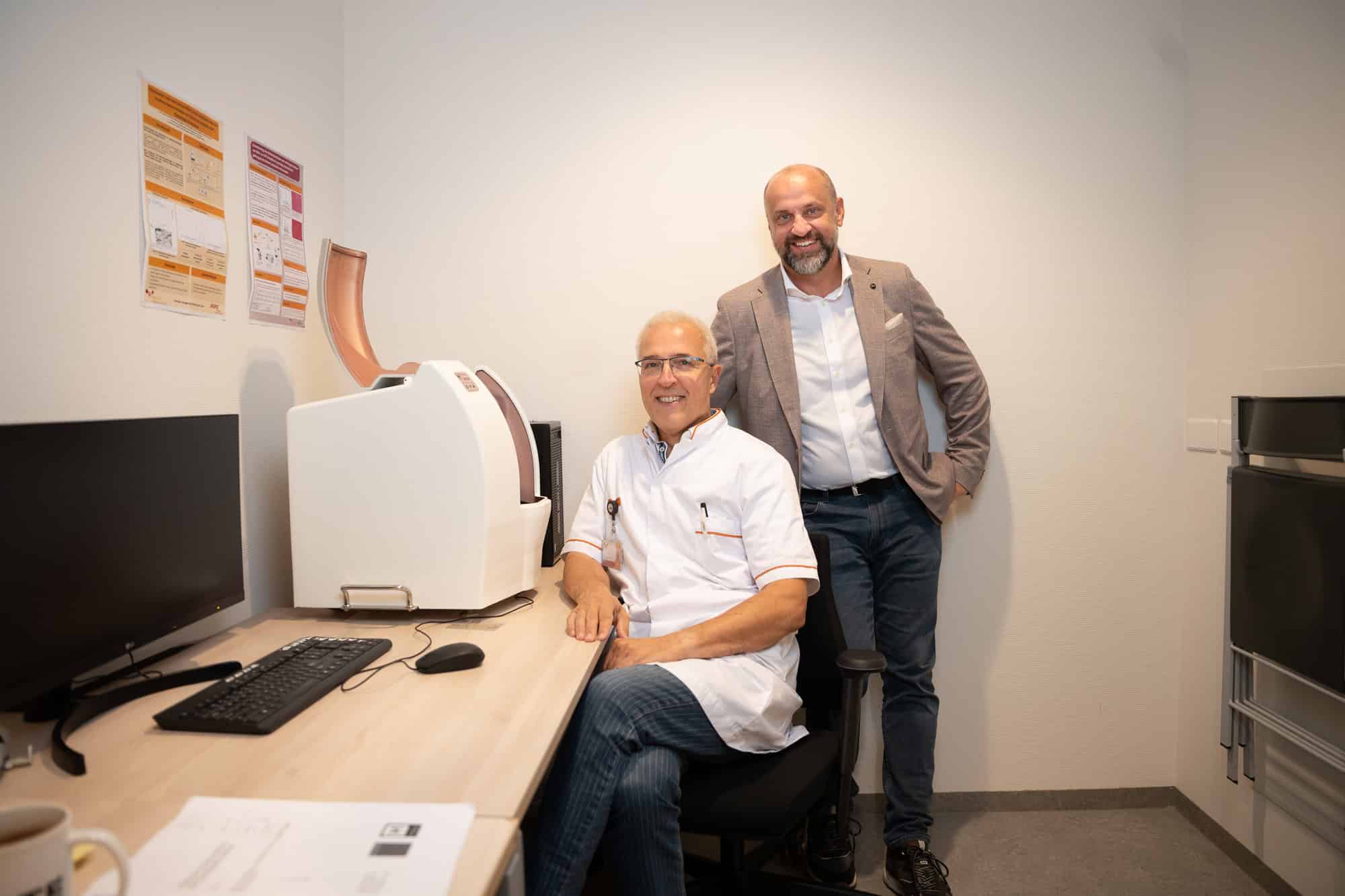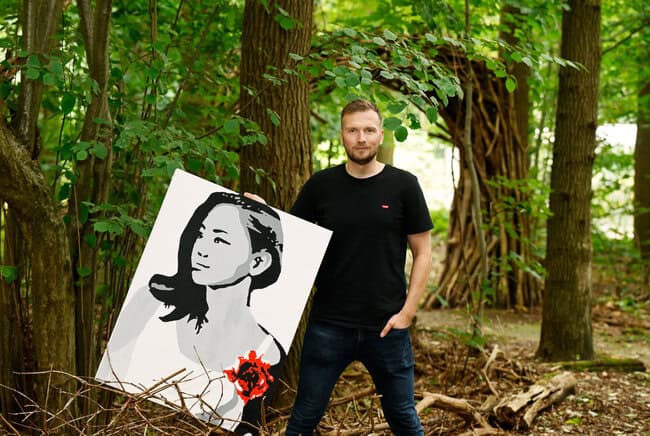
Hundreds of thousands of Dutch suffer from crystal diseases such as gout, pseudogout and osteoarthritis. With the pioneering microscope from Limburg-based Crystalytics, which works with advanced spectroscopic techniques, they can count on a faster and more accurate diagnosis in the future. Thanks to recent funding the company received from LIOF, market entry is getting closer.
Within rheumatology, there are many diseases caused by crystals. These crystals can cause inflammation and pain by accumulating in joints and tissues. Crystalytics’ innovative microscope can significantly reduce the number of misdiagnoses for these diseases. Patients are more quickly and correctly diagnosed and thus receive appropriate treatment sooner.
The company recently received funding from LIOF from the Limburg Startup Capital Fund (LSCF) to bring the device to market. LSCF is a fund for startups and innovative SMEs that contribute to societal transitions: energy, circularity, health and digitalization.
One hundred years old
How it is possible that the microscope “does its job” so well is due to the technology. Two technologies are integrated into the microscope: the polarization microscope (the current gold standard) and Raman spectrography. We have known about this technique for a hundred years, but it has never before been applied in medicine, says Tim Jansen, CMO of Crystalytics, also a rheumatologist at VieCuri Hospital. “A polarization microscope shows specific crystal structures associated with gout or pseudogout, for example.
In chemistry, however, Raman spectrography has long existed, invented by Indian physicist Chandrasekhara Venkata Raman, who received the Nobel Prize in Physics for it in 1930. This technique, the rheumatologist explains, can identify molecular bonds unique to a particular crystal or deposits that determine a specific disease, once a laser light shines on them. In fact, direct identification of particles that would otherwise remain invisible takes place. Jansen is confident: “This may well become the gold standard in the diagnostic process of all kinds of diseases where depositions play a causal role.”

Crystals, microplastics and titanium particles
The microscope is capable of more than just identifying crystal deposits. For example, the device also “sees” microplastics or titanium particles that may be linked to certain diseases. “We have detected titanium dioxide particles in people with prostheses. We couldn’t recognize these before this microscope was there.” This could indicate causation, but more research is needed to prove it.
Stunning results
Previous research by the startup, funded by LIOF, ReumaNederland and VieCuri, already showed that the prototype works. Anticipating CE certification, which indicates that a product meets all EU requirements according to the manufacturer, more than 400 samples have now been analyzed. These showed that correct diagnosis for gout went from 81% to 100% and for pseudogout from 65% to 98%. In addition, the current analysis time of 30 minutes is reduced to 10 or even 5 minutes.
Financing from LIOF
The microscope currently exists as a prototype. Thanks to funding from LIOF, Crystalytics is taking the first steps toward commercialization. “We are now conducting a study to see if the crystals we found in 30 samples from osteoarthritis patients are consistently present. We also want to see if the presence of these crystals can predict how patients respond to certain drugs.”
Crystalytics is working closely with VieCuri Hospital, Maastricht UMC+, ReumaNederland and the University of Twente. Over time, the startup is also seeking cooperation with foreign hospitals. In addition, Crystalytics aims to support scientific research for the pharmaceutical industry.
Optimizing
Meanwhile, the startup is optimizing the microscope. Arjen Baetsen, CEO of Crystalytics: “For example, we are investigating how to apply artificial intelligence (AI) to automatically identify crystal groups. Ultimately, the device should be put together in such a way that anyone can easily work with it.” The microscope can be found in VieCuri Hospital’s laboratory, so that general practitioners in the region can easily have samples analyzed.
Gout, pseudogout and osteoarthritis are the first diseases Crystalytics is focusing on. “Within a year or two we will enter the Dutch market with the microscope itself,” Baetsen expects. This will be followed by Germany, France and Spain. Later, the rest of the world should follow.
Convincing a conservative market
Jansen and Baetsen are optimistic about the future of their company. “The fact is that we are entering a fairly conservative market with an innovative instrument. However, we have experienced little resistance so far. International experts are very interested. For the past hundred years, Raman spectrography has hardly been used in medicine, but we are going to change that,” Baetsen concludes smiling.

